I’ve always prided myself on being super in tune with my body and pretty clued up on women’s physiology. I’m a qualified personal trainer, health and wellness journalist and former WH editor, and I’ve worked with hundreds of top-in-class experts for in-depth articles. Overall health, fitness, nutrition, you name it — I’ve written about it. I thought I knew pretty much everything there was to know.
And then I had a baby.
Everything I thought I knew about the female body — about my body — went out the window. And if pregnancy was an earth-shaking experience, life postpartum was even more so.
One thing that helped enormously in finding my feet as a new mum was getting back to exercise. Not because I was ashamed of my changing body or wanted to *shudder* bounce back. But I did need to carve out space for a piece of my pre-mum life, for something that bridged the gap between who I was and who I had to be for my daughter. (Those feel-good endorphins weren’t bad either.)
This is a look at my postpartum exercise journey — how I started (including my birth story), what helped me along the way, and where I’m at now almost one year on.
Brace yourself — it’s a ride.
My pregnancy
I’d always assumed I’d be one of those super-fit pregnant ladies — swanning around the gym preceded by a growing belly, dumbbells in hand. Alas, it was not to be.
Trimester 1
I spent much of my pregnancy, especially the first 12 weeks, on the couch. I went from exercising five or six times a week to not being able to manage a single squat. From being a foodie with a cast-iron stomach to not being able to get down more than (of all things) baked beans on toast. And, hello, lightning crotch, anyone?
Trimesters 2 and 3
Thankfully, by the second trimester, the food aversions were less intense and the nausea had subsided. With clearance from my midwife, I was ready to start exercising again. While pregnancy exercise is perfectly safe, even encouraged, during normal pregnancy (some studies suggest that moderate exercise during pregnancy can improve birth outcomes), I knew that the three months I’d spent watching Schitt’s Creek on the couch (time well spent) meant I couldn’t pick right up where I left off.
I shopped around for a gentle prenatal exercise plan and settled on The Bump Plan by the Pilates PT Hollie Grant. The pregnancy fatigue was still serious, so some weeks I only did one session, but I was pretty happy with that. I did manage the occasional walk too.
All things considered, I had a pretty easy pregnancy. I’d been strength training religiously for about a year beforehand, and there are studies to suggest this may have helped. For example, a study published in the (aptly named) European Journal of Pain found that women who participated in a strength training program before and during pregnancy had a lower incidence of lower back pain and pelvic girdle pain, and I didn’t experience any of that at all.
Research (like this study in the Journal of Maternal-Foetal Neonatal Medicine) also suggests that women who participated in regular exercise before pregnancy had a lower risk of C-section delivery — this one didn’t apply to me.
I went into labour with my daughter, Logan, a day before her due date. I laboured (as planned) at my local hospital for over 12 hours, when Logan’s heart rate spiked and doctors became concerned. They strongly advised an emergency C-section, which I agreed to. Logan was born about 15 minutes later, and my world shifted on its axis.
My birth recovery
Through the ups and downs of pregnancy, it was hard to come to terms with the fact that I couldn’t move my body in the way I loved. I clung to the idea that postpartum would be easier. I’d be able to exercise again. I’d have body autonomy back. (If you’re a mum reading this, you’re likely smiling wryly, if not outright guffawing, aren’t you?)
The first two or three weeks after birth were tough. Learning to care for the tiny human we had brought into the world was a huge learning curve for my husband and me. We barely slept, lived in perpetual fear we were doing something wrong, and seemed to be permanently splattered with poop, breastmilk or both.
Of course, I had the added extra fun of C-section recovery to deal with. The midwives in the hospital had had me walking (read: shuffling gingerly) around the ward the day after my surgery, so by the time we were discharged three days later, I was moving well and found the pain manageable.
What shocked me, though, (TMI alert) was the bleeding. Not from my C-section incision, but, er, downstairs. I’d assumed that because I hadn’t delivered vaginally, all those maxi pads I’d been given at my bridal shower wouldn’t be necessary. On the contrary, I eventually upgraded to adult nappies (a hospital bag must-have).
This continued for several weeks, which is actually pretty normal. ‘Even if someone has a C-section they may still experience vaginal bleeding as the placenta detaches from the uterus and the site of attachment heals,’ explains GP Dr Frankie Jackson-Spence.
As long as it isn’t too heavy, there isn’t any reason to be concerned, she adds. ‘Your doctor or midwife will counsel you individually on how much bleeding is ‘normal’ for you. If you notice a change in that it becomes more heavy, you become unwell, experience severe pain, have a change in vaginal discharge that may indicate infection or something doesn’t seem quite right then it’s always better to seek medical attention, even if just for reassurance,’ she adds.
Thankfully, that didn’t apply to me. But my recovery felt achingly slow. I couldn’t take Logan for more than a walk around the block in her buggy. I vividly remember one lap around our neighbourhood as my scar ached and heart pounded thinking that a full recovery was beyond my reach. How could I ever get back to exercising in the way I loved if I could barely manage a walk around the block?
It was perhaps this thought that drove me, at four weeks postpartum, to push myself. I took Logan for a slow 45-minute walk — something I’d never have classified as ‘exercise’ before — and was rewarded with more aches around my scar and reinvigorated bleeding. Yay. Moral of the story: patience, grasshopper. Get your doc’s clearance before you begin any kind of exercise postpartum.
‘Women who have a C-section (without complications) should wait at least 6-8 weeks to allow everything to heal,’ Dr Jackson-Spence says. ‘A C-section is a big operation and your body needs time to heal properly before adding the extra stress of exercise. Exercising before being given the ok by a medical professional could delay wound healing and increase risk of complications.’
I didn’t experience any, but my gung-ho attitude set my recovery back. From there on in, I was determined to take it extra slow. Another four weeks of this ensued (if you can call taking care of a newborn taking it slow), before I was ready to try again.
This time, with help.
My postpartum exercise journey
Before we progress any further, some housekeeping: This was my journey. Every pregnancy, birth and recovery is totally different. It’s always best to check with your own doctors or health professionals about when it’s safe for you to exercise again, and how. This is just what I did to get back to exercise, and I’m sharing it to give you the confidence and tools you need to do the same for you, if and when you are ready. Here’s everything that helped me.
1.I got checked — twice
I went for a check-up with my doctor at the standard eight-week mark. She looked at my C-section scar, which was healing up well. Then she asked me a handful of questions about pain and bleeding and declared me fit to exercise again. ‘But don’t overdo it,’ she warned and sent me on my way.
The more detailed physical check came a few days later, when I visited a women’s health physio. I’d learned from several postpartum articles I’d written for WH that a specialist MOT is the gold standard in exercise clearance postpartum. So off I trotted to Lonese Jacobs’ practice.
Lonese spent about 30 minutes asking me about my pregnancy, birth and general health and fitness, before moving on to a full-body assessment. Then she had me lie down so she could examine my abdominal muscles. She managed to stick two fingers between the right and left side of my rectus abdominis (‘six-pack’ muscles), diagnosing me with diastasis recti — a separation of those usually tight-knit muscles that is really common during pregnancy.
Finally, she snapped on her latex gloves for a more intimate examination. She had me tighten my pelvic floor muscles around her finger (I said intimate, didn’t I?) to measure the strength of my contractions.
When I’d dressed again, she gave me the lowdown on what I needed to take into account when getting back to strength training. ‘With your diastasis recti, you’ll want to slowly build your abdominal strength back up with low-intensity moves, minding that there is no doming [when your rectus abdominis pops up like a long mound running the length of your abdomen],’ she said. ‘If you have a visible dome, you’ve lost correct activation of your rectus muscles.’
On the pelvic floor — the fact that I had not yet experienced any leaking made me one of the lucky few, she told me. A meta-analysis in the International Urogynecology Journal found that almost a third of women experience urinary incontinence in the first three months postpartum.
‘Your pelvic floor strength is fair,’ she said. “I would recommend you focus on activating your pelvic floor with specific pelvic floor exercises before you begin any other exercise. So if you’re squatting, focus on that squeeze before you lower to the ground, and reset as often as you need to.’
In general, she warned me against going too heavy on weights too soon. ‘The load needs to be gradually increased,’ she said.
2. I got (more) expert help
If pregnancy had taught me anything, it was that I still had a lot to learn. I enlisted the help of a coach I’d worked with pre-pregnancy, who was also a qualified pre- and post-natal trainer, Jake van’t Hoff from Beyond Fitness Coaching.
We had a call (Jake is based in Edinburgh) to discuss my goals. ‘I just want to be strong,’ I told him. ‘I want to not feel aches and pains when I get up in the morning, I want to be able to rock Logan to sleep in my arms without them starting to get tired. I want to pick her up with ease in one, two, five years from now.’
And so operation “get silly strong”, as Jake dubbed it, was a go.
First, he made absolutely sure I’d been checked by my doctor, and, first prize, a women’s health physio. ‘With any client postpartum, there needs to be an assessment of their pelvic floor, any ab separation and core control, ideally by a female health physio,’ he says.
I sent over Lonese’s report, and he got to work devising a plan that catered to both what I wanted and what my body needed.
Jake’s advice before letting me lose in the gym? ‘Start slow, but try not to be too cautious or avoidant with exercise. Don’t worry about smashing every session, but don’t write the week off if you miss one or two — do whatever you can or have time for. It doesn’t get easier by leaving it longer to get back into it so once you’re physically able try to start that routine again.’
My postpartum workout plan
Goal #1: Core and pelvic floor function
Contrary to what one might expect, this did not mean a lengthy roster of abdominal exercises and endless kegels. Instead, Jake programmed in classic compound exercises like squats, deadlifts, and lunges, with reminders to brace my core and contract my pelvic floor.
‘This was very much a case of relearning movement patterns without compromising your core/pelvic floor control,’ he says.
Initially, there was only one ‘ab’ move in my workouts, which I was to perform three sets of at the end of every session: dead bugs, knees bent, and with legs only.
‘I started with exercises I knew would be least likely to cause doming — where you could keep your spine and core in a fairly neutral position for you, postpartum. Things like a bent-knee dead bug are good here as you’re lying on your back with a small range of motion,’ Jake adds.
‘From here we’d look to progress that challenge to your core without compromising on the control we’d established.’
Exercises included:
- Deadbugs
- Dumbbell split squat
- Dumbbell Romanian deadlift
- Barbell hip thrust
- Dumbbell reverse lunge
- Goblet squat
Goal #2: Carry Logan around without arm and back aches
Jake added in plenty of upper body work to cater to my desire to heave my increasingly heavy baby around without my arms and back aching. Logan needed lots of rocking and bouncing to fall asleep for the first few months, which was proving killer on my back.
Interestingly, the glutes also have a part to play here, as well as in goal #1. ‘Glutes play such a large role in day-to-day life,’ Jake says. ‘They support the rest of your core muscles as well as supporting the pelvis.’
Exercises included:
- Incline dumbbell bench press
- Dumbbell single-arm row
- Dumbbell lateral raise
- Seated dumbbell shoulder press
- Dumbbell bicep curl
All of the exercises above made for a well-rounded full-body plan. Jake distributed these moves across three workouts per week, which would take about an hour each.
3. I went back to the gym
While I could have exercised at home (I eventually did invest in some home gym equipment to eliminate the commute time to the gym when I went back to work — being a working mum = being super time-poor), I decided I was going to work at a gym initially.
Getting actual physical space from Logan, while hard at first, turned out to be so important for my mental health in those early months. It helped me feel like me, rather than a milk-making, nappy-changing, sleepless zombie. It helped me bridge the gap between who I used to be and my new identity as a mum.
4. I leaned on family and friends
That said, leaving the house when you have a newborn is hard — not just mentally, but logistically. Mercifully, I had help that made this possible. Three times a week my mum-in-law came around and spent about 2 hours with Lo: enough time for me to go to the gym, and shower when I came home.
Still, I felt so out of place in the gym at first. My body had, of course, changed, my form was not what it used to be, and I was lifting the lightest possible dumbbells available. I’m sure barely anyone glanced my way, but I felt like everyone was looking at me.
While I knew these insecurities were entirely internal, no amount of positive self-talk could turn them off — so I called on a friend. Meeting a friend at the gym is a hack I’ve always recommended to gym newbies who feel a little self-conscious, so I took my own advice. She was new to the weights room and also felt anxious alongside the grunting blokes. We both felt more comfortable together. Also: it was great to have someone to giggle with me when I sprung (yet another) breastmilk leak.
One year later
I continued with the program above for about two months, checking in weekly with Jake. He monitored my form with videos I filmed in the gym, tweaking things where I looked a bit wonky. After eight weeks, I switched over to an updated strength training plan Jake had written for me. The moves and muscles targeted were similar, but he upped the ante on abdominal exercises. My beloved dead bugs progressed to arms and legs, and I now found myself doing things like side planks (at the start, only for about 30 seconds each side).
Slowly (oh, so slowly) the weights increased. I gained more control. I didn’t have to focus as hard on bracing my pelvic floor – it just happened naturally as I became used to the movements
After seven months of consistent, humbling work (sometimes only once or twice a week when Logan wasn’t sleeping well), I felt almost as strong as I had before I got pregnant. By 11 months, I was suddenly lifting heavier than I had. The PBs started rolling in.
Looking back, I’m amazed at how far I’ve come since creeping gingerly around that hospital ward. The aches and pains are gone. I can tote a now-10kg Logan around in one arm, no problem. But the mental health benefits of exercising have far outweighed the physical changes. It’s helped me find myself again after the cataclysmic shift of pregnancy and birth
Or rather, a new, silly strong, mum version of myself.



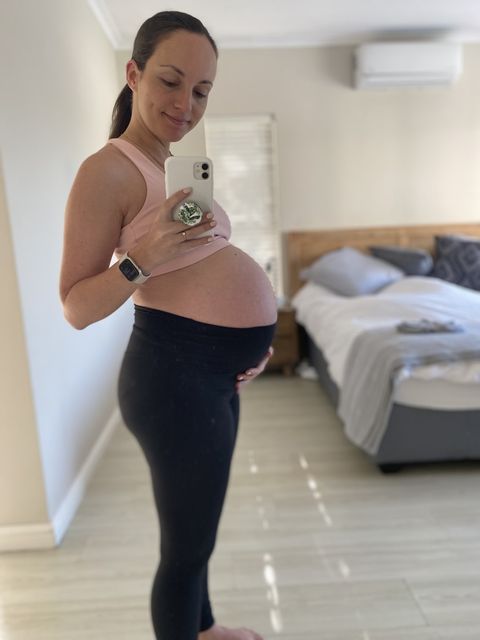

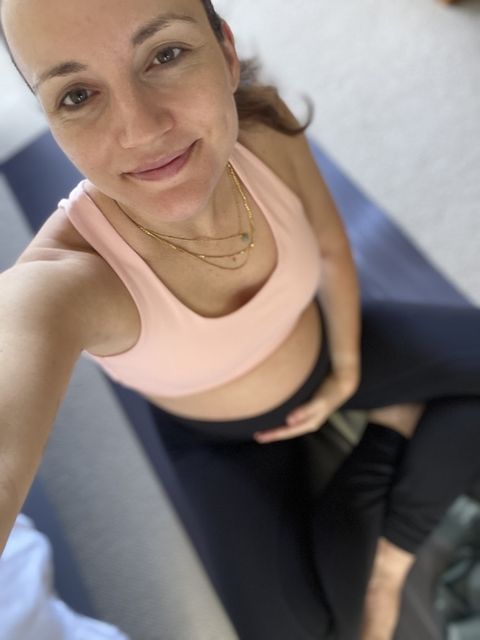
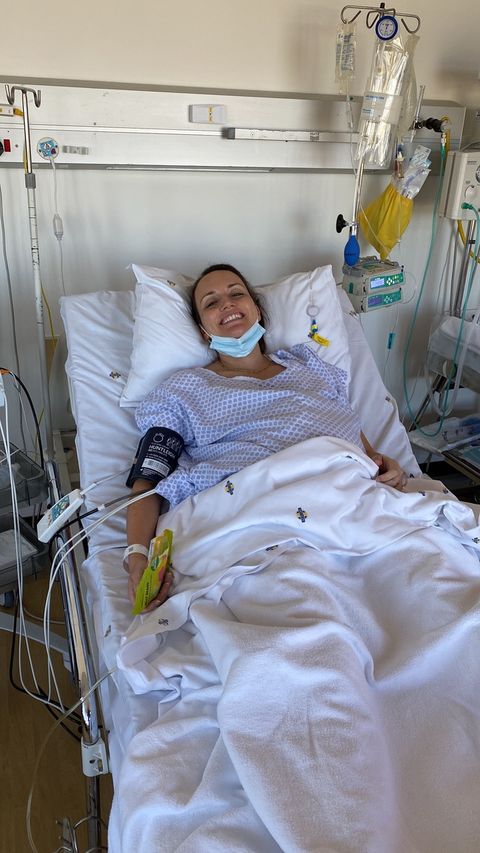




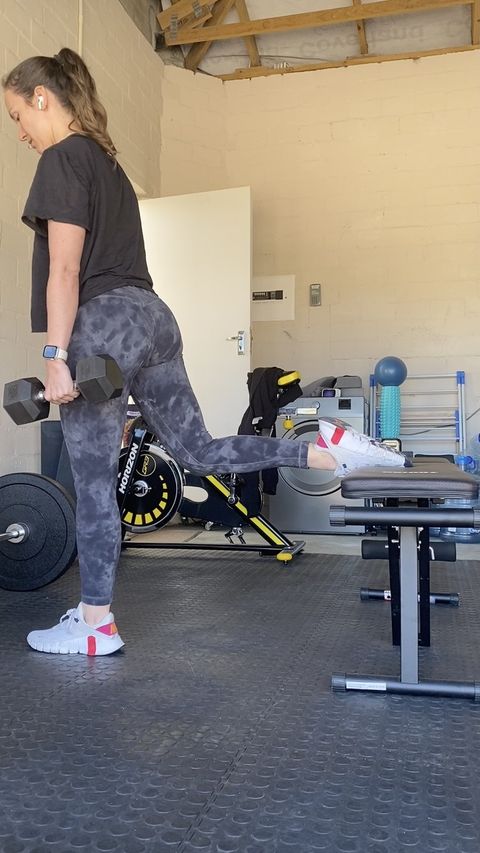
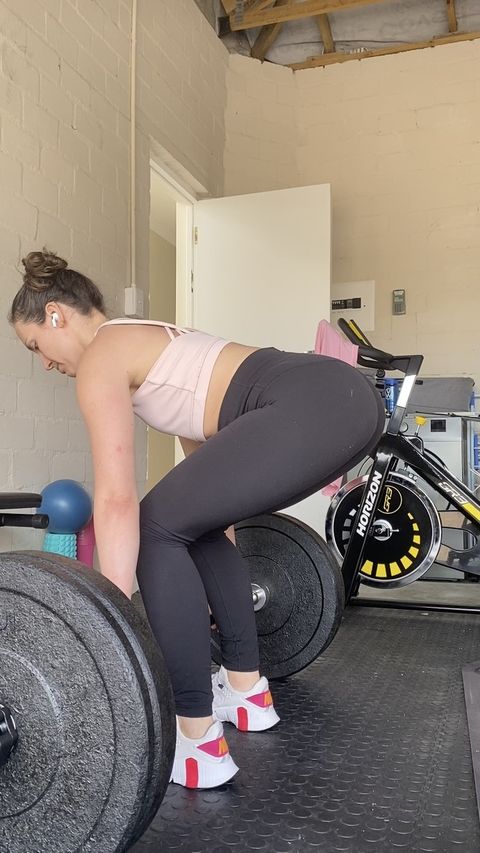
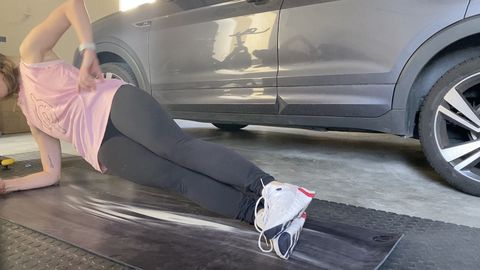




More Stories
The Introvert’s Sanctuary: Why Creating a Home Gym Could Transform Your Wellbeing
Health and Fitness: A Holistic Approach
10 killer 10-minute workouts to transform your fitness routine